One common question that we are asked right here on the blog, as well on Facebook and Instagram is how do we know what the chimpanzees are trying to tell us, or how do we know what they’re requesting. A lot of it has to do with gestural communication.
Throughout the years, studies have been conducted to study to what length nonhuman apes can learn a human language, specifically American Sign Language. Washoe and her chimpanzee family, Koko the gorilla, Chantek the orangutan, and even Kanzi the bonobo has learned to communicate using a Lexigram. But what about those who didn’t learn a human language or other human form of communication? What about just natural gestures?
All of the large-bodied apes use gestural communication. This includes chimpanzees, bonobos, orangutans, gorillas, and of course us, humans. So hopefully it won’t come as a surprise there is some overlap. Not just within the gestures themselves, but how he learn and use them.
In some of the more recent studies, researchers have been looking for the intentionality of gestures. They adapted some methods child behaviorists look at in infant’s ability to learn and communicate using gestures. The some of the key things researchers look for are audience checking, response waiting, and persistence.
Audience checking is just as it sounds. Is the person who is about to try to communicate aware the intended recipient is paying attention to them? If so, they will proceed to gesture. If not, the communicator will adjust their position to ensure the recipient sees them, or do an attention getter. There’s no point in trying to do a visual form of communication if the recipient isn’t looking at you, right? In the case of some of the chimps here, the attention getting comes in different forms. For instance, Burrito will usually blow Bronx cheers or start kicking the caging. Honey B will blow Bronx cheers or clap her hands loudly. Jamie will sometimes throw things such as toys, alfalfa cubes, cowboy boots, etc.
Response waiting is when the communicator waits to see if you got the correct message. Did you fulfill their request?
If that message is not received correctly, then persistence comes about. Maybe you didn’t understand the first time, so the communicator will give you the gesture again or modify it to some degree to make sure you understand, which may include the use of additional gestures.
Most of the gestures the chimpanzees here use toward human caregivers are requests. And one of the simplest gestures to look for is pointing.
When Jamie wants to go for a walk around Young’s Hill, she will deploy her attention getter. Once she has our attention, she will point until we get whatever combination of caregiver and boots she has in mind. When a caregiver comes back with a pair of boots, but they are the wrong boots, she will proceed to continue point and waving her fist again. As we get closer to her perfect walking combination, her gesturing slows down. However if we are way off mark, it speeds up and usually includes her patting her own head and/or stomping her foot. Once the combination is found, she races to the Hill, with caregiver and boots in tow.
We, as caregivers, don’t just look for the pointing. We have to put into consideration the context of the situation. As some of you know, Jamie also loves Gator races. About half way up Young’s Hill, Jamie will stop, look at us, then turn to point in the direction of the Gator. This is one of the easiest ones caregivers caught on too because it’s unmistakable. The second we take a step in the direction of the Gator, Jamie stops her gesturing, and prepares to get a running head start.
Here is her Gator request in play.
Burrito, when he’s on his snowy treat kick, starts his Bronx cheers and points in the direction of snow.
This is another one we have come to understand very quickly. When I first started here, I would ask him what he was pointing at. As I would head outside looking around, his Bronx cheers would become louder, and he would point in different directions (if snow was everywhere), or if there was only a single patch of snow, he make sure he is pointing to that patch and start nodding his head. Once I give him his snowy treats, he will *usually* stop because his request was fulfilled.
However, as some of you know, Burrito’s snow addiction sometimes knows no bounds.
He will only stop until he has the right amount he is requesting.
One of the other easiest ones we know is when we are about to serve a food item that isn’t as high on there priority list. Negra and Foxie are masters at this one. Four fingers will protrude through the mesh to sort of push away the item.
If we attempt again to serve that item, the gesture occurs again and sometimes with a little swipe to let us know this is not what they want right now. Today, Kelsi was serving onions, both Negra and Foxie did the same gesture to let her know it was not time for onions. The time was for sweet potatoes.
There are many resources to learn about chimpanzee gestures. One of the most informative is The Great Ape Dictionary created by gesture researchers from the University of St. Andrews.
There is also a great NOVA Wonders documentary episode on PBS called What Are Animals Saying?
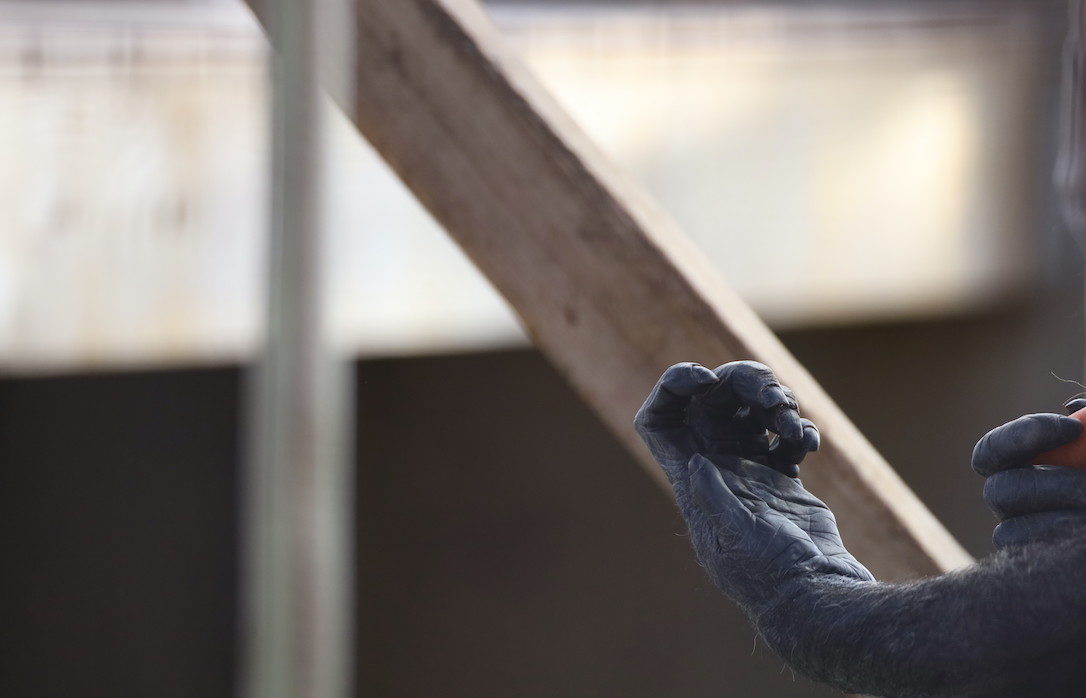
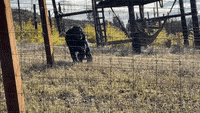
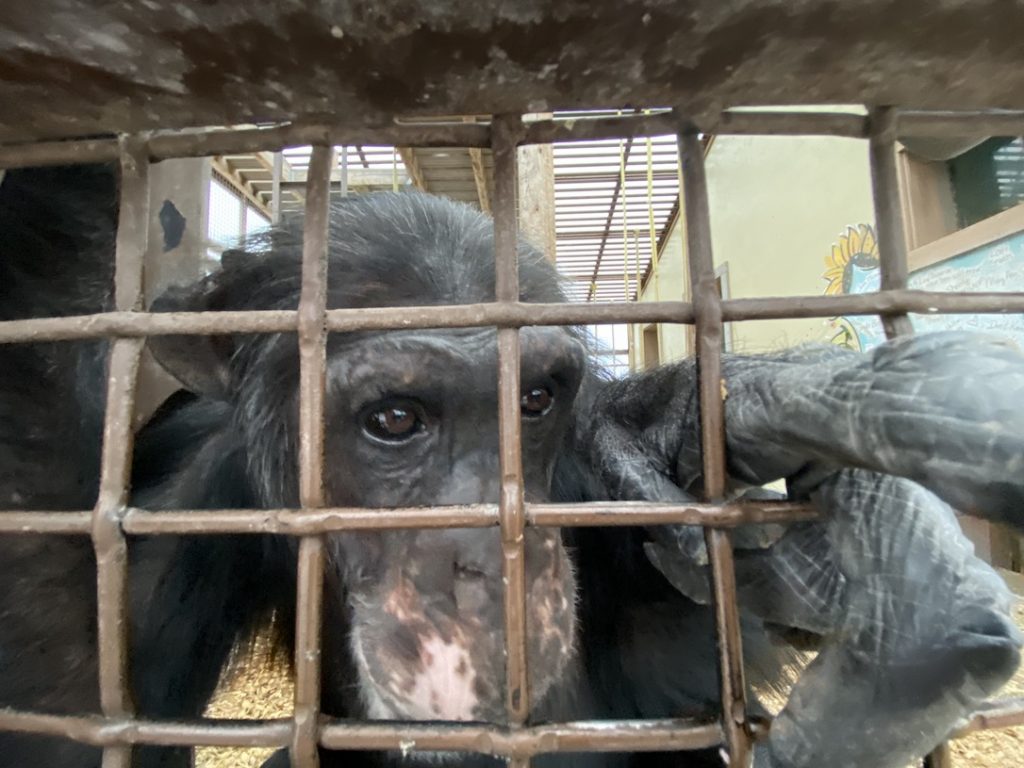

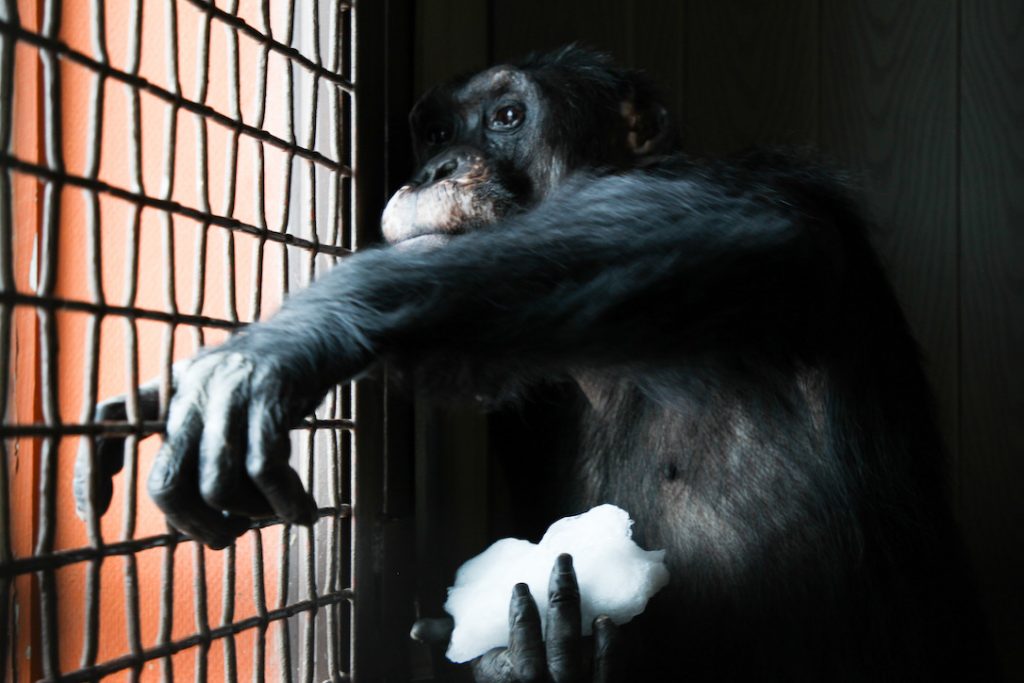
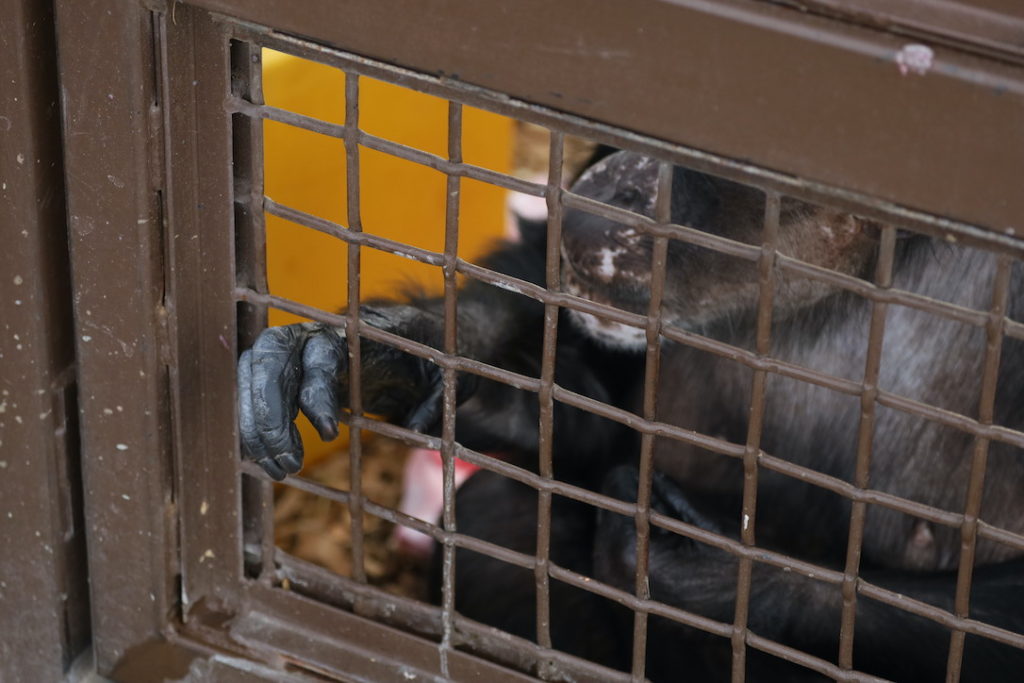
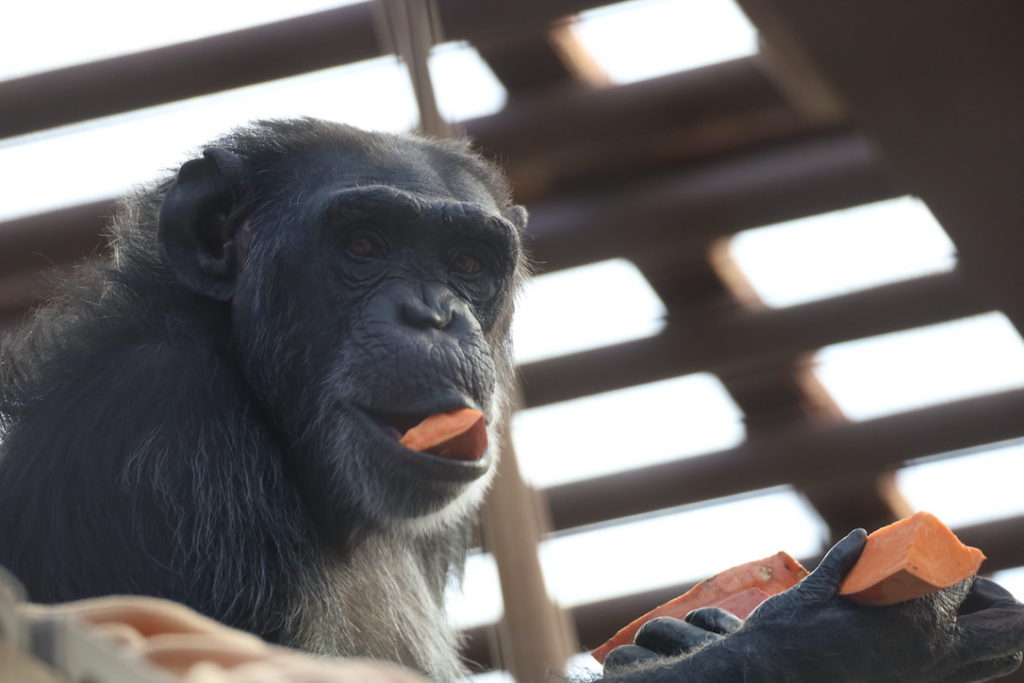
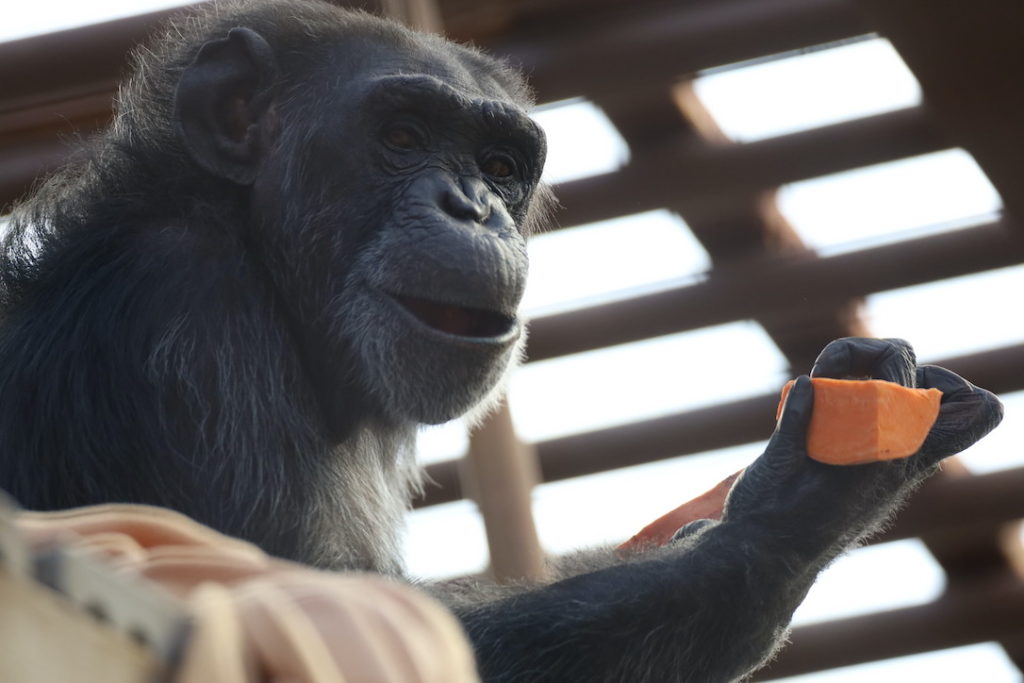
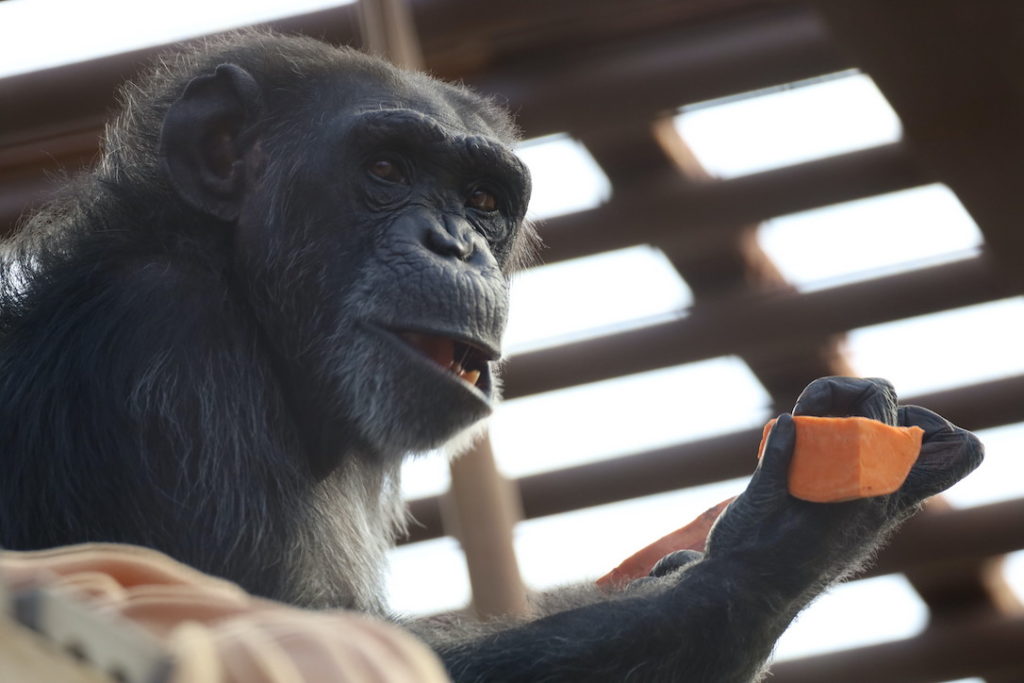




What a great post, thank you Chad. Your job seems like a lot of work, but SO worth it !
I love Jamie and the Gator, her hand clap before she takes off just cracks me up 🙂
That and the first spring into the air get me every time!
Thank you, Chad, for giving Tiny .ore sweet potatoes. She needs them!
Over the years of watching your videos, I think I have seen head nods of approval. I have never seen a head shake to indicate a negative response.
Thank you Chad.
Well said
Super cool post Chad, thank you. And thanks for the links at the end, my new rabbit hole. I wish I could sit next to you some afternoon and discuss this topic, it’s something that has long intrigued me. It is wonderful to be able to communicate with another animal without saying a word. I have had the pleasure of working with deaf dogs at shelters. One deaf dog in particular really stole my heart because of the unique experience we shared through our signs and gestures. Being a graphic designer, I made him a large deck of “Flash Cards” illustrating all of the signs he knew so staff, volunteers and even his adopter (who took the deck home with him), could communicate consistently using the exact same signs. The deck was for us communicating to him, but he had his specific gestures and sounds and behaviors he would do so he could communicate with us too. What wonderful connections you must have with your ten chimp friends, enriched by all of their unique ways of communicating. Sweet potatoes = YES! Onions = not so much. Seriously laughing over Neggie and Foxie right now.
What a wonderful story, Kathleen.
Always enjoy reading about your dogs at the animal shelter stories, Kathleen. As a matter of fact I always enjoy reading ALL OF YOUR BLOGS.
This is a wonderful informative column. Love reading about the chimps and their different idiosyncrasies. Love the “boots” and eating snow.?
This is a wonderful informative column. Love reading about the chimps and their different idiosyncrasies. Love the “boots” and eating snow.?
Wonderful blog Chad. I’m blown away by the way these intelligent beings get you to understand what they want and remember which gesture they need to use for which task. It must be a fascinating subject to study. Thank you so much.
All this gesturing reminds me of “hot, hotter, no, cool, cold, freezing!, warm, cool, no! cold, okay, warm, warmer, really warm, hot, hotter, very hot!……”
Thanks, chad, for a very informative article. Found it so interesting how they all have DIFFERENT methods of communicating what they want.